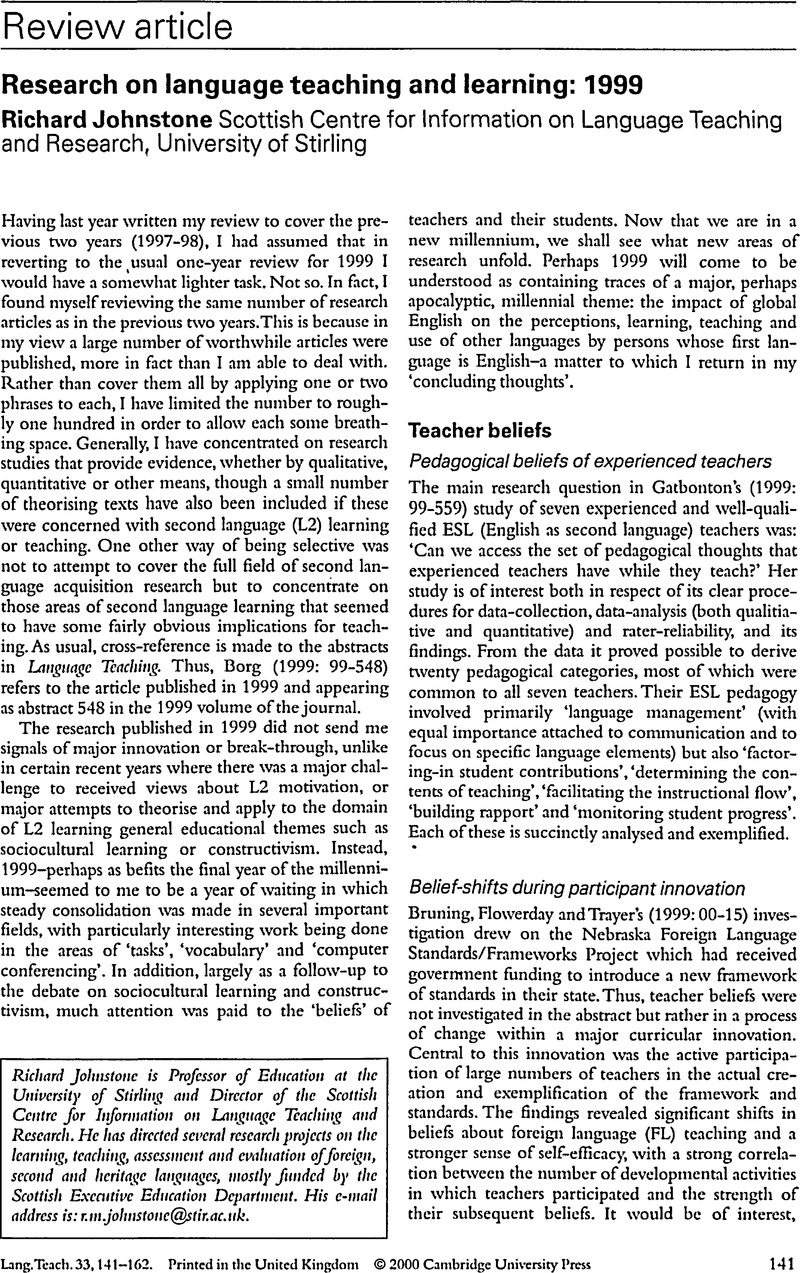Crossref Citations
This article has been cited by the following publications. This list is generated based on data provided by Crossref.
Pachler, Norbert
2003.
Foreign language teaching as an evidence-based profession?.
The Language Learning Journal,
Vol. 27,
Issue. 1,
p.
4.



